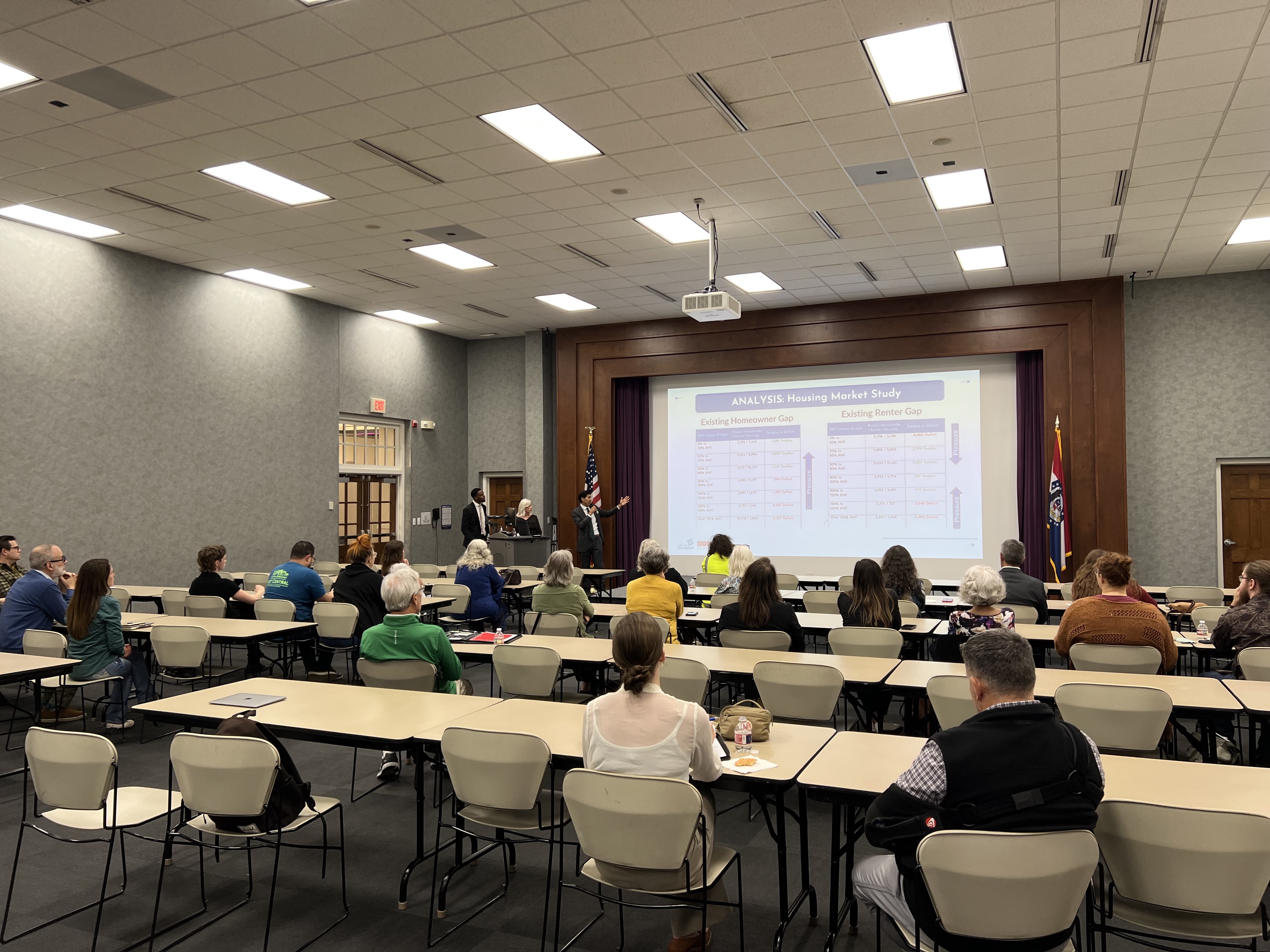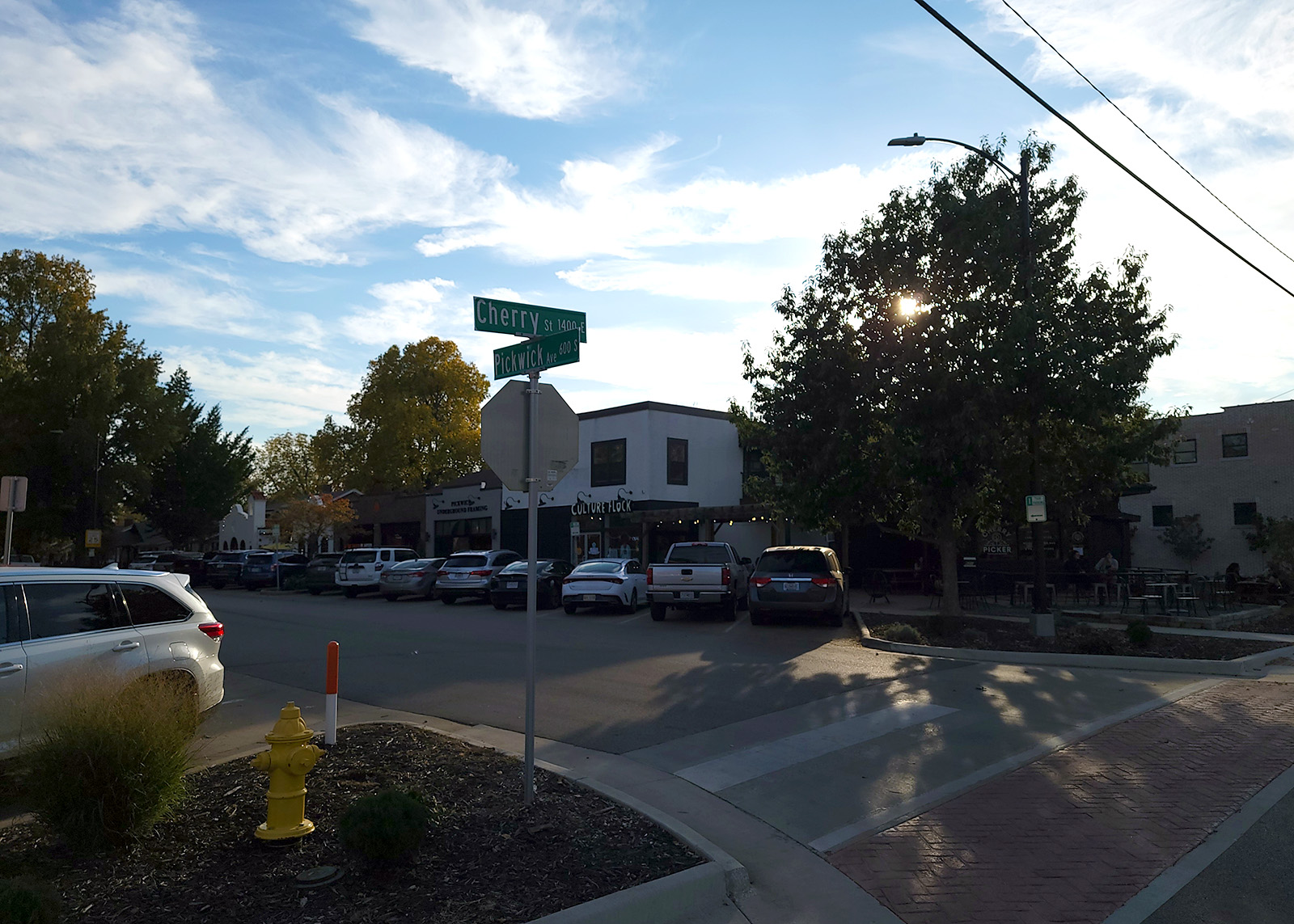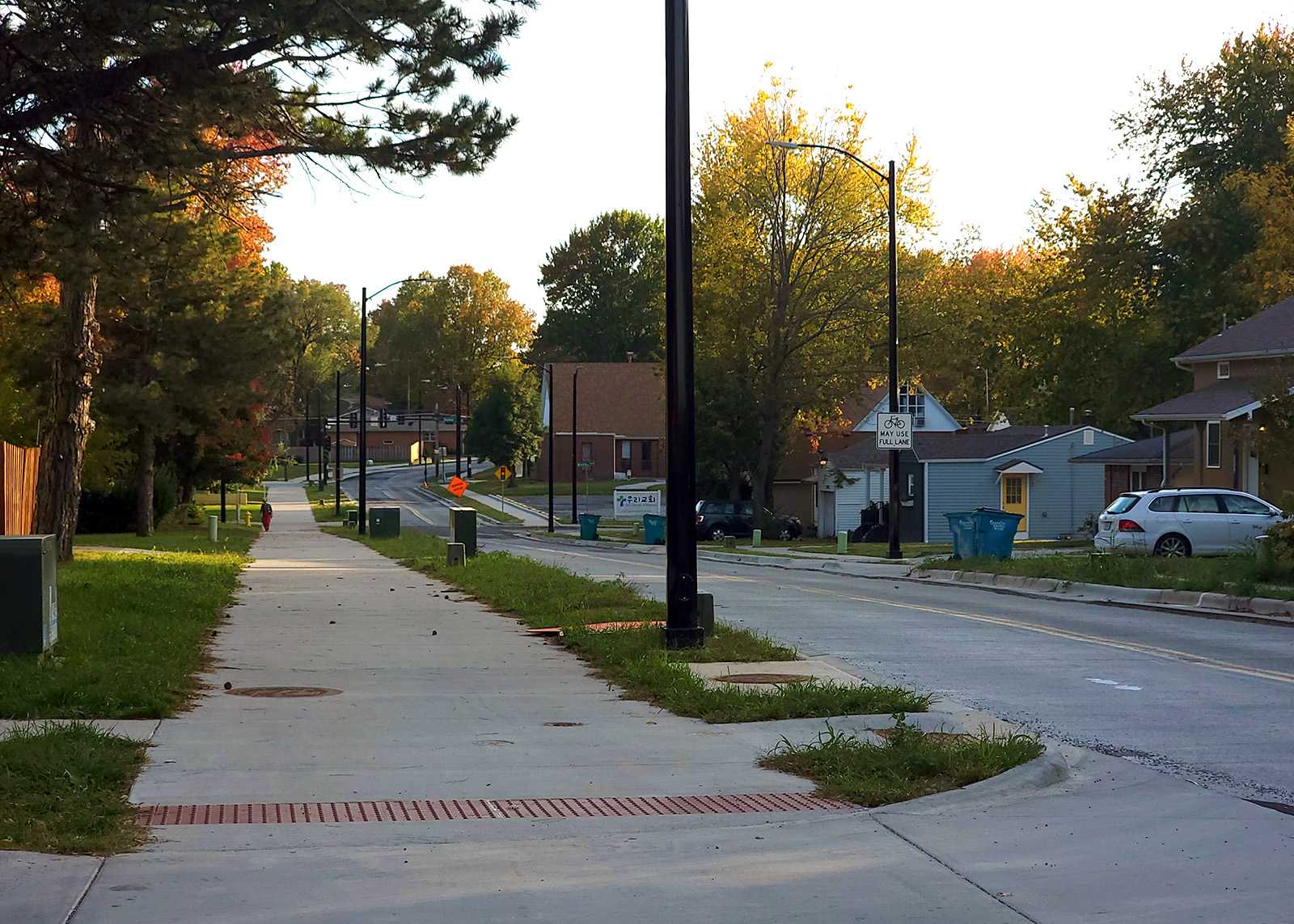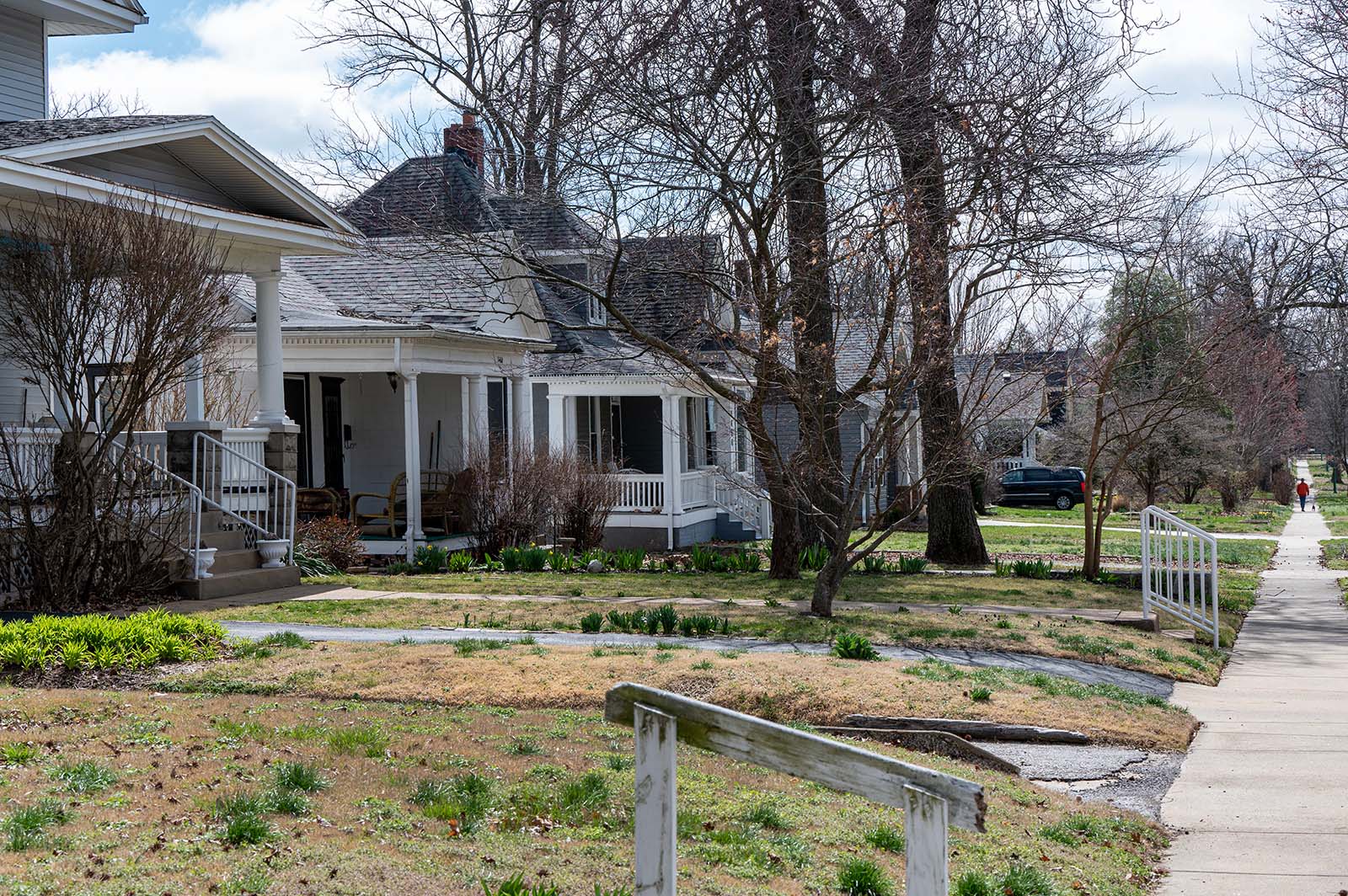When it comes to housing, Springfield’s neighborhoods are challenged.
The problems range from a low rate of home ownership to a lack of housing diversity to aging homes, but recommendations from a city-wide housing study aim to address them all.
Hired in November 2022, consultants from APD Urban Planning and Management unveiled their suggestions to improve housing and neighborhoods in a third and final public meeting on Oct. 26. Their recommendations are backed by public input of various forms, case studies from around the United States and data compiled in a “windshield” survey of around 48,000 properties in Springfield.
The study and its final report, which will be presented to the Springfield City Council in December, are meant to guide decisions to stabilize and improve neighborhoods, by spurring new developments and rehabilitating existing properties.
Affordability, housing conditions analyzed in study
The study took into consideration a number of factors in determining their recommendations, weighing both what the public wants and what the city needs. In addition to the previous public meetings, consultants from APD held one-on-one interviews with community members, hosted several “steering committees” and received input from Springfield residents.
“A critical part of this study was actually getting feedback from the community, because we can crunch all of our numbers and do our own data search, but we'd like to verify that with the community who lives here,” APD Senior Planning and Design Manager Deborah Jensen said. “So community engagement was a big part of this entire study process.”

The consultants were also tasked with educating the public on Springfield’s housing needs based on data they collected that revealed gaps in the city’s housing inventory.
“If you've always lived in a single family detached neighborhood, you don't even really think about the fact that what happens to my son when he grows up, he can't afford to buy a house here, isn't there any other option? Or what happens when grandma, you know, needs a little help? Or doesn't need a big yard to take care of anymore? Can she stay in the neighborhood? So a lot of times it's really communicating what the options are and helping people understand why these issues are important,” Jensen said. “And then of course, listening and making sure that you pay attention to what they're telling you and what they would like to see happen.”
1 in 5 Springfield homes in ‘fair to poor’ shape
Online survey results showed a significant amount of respondents (74 percent) want more regulation of rental housing, 68 percent want to see new housing types and 61 percent in favor of more affordable housing and down payment assistance.

The firm also carried out its own “windshield” survey, in which they collected data on housing conditions using a 360-degree camera atop an SUV while driving neighborhoods throughout the city.
Some of the information collected in the survey was cross-referenced with other data, and presented to the public on June 8. It revealed a number of things, including that the vast majority (92 percent) of housing in Springfield was single-family residential homes and 21 percent of housing is in fair to worse condition (with 4 percent considered “poor”).
APD Urban Planner Reginald White Jr. said that the lack of diversity in housing type can pose an issue for people and families with different incomes and in different stages of their lives. Additionally, the condition of homes was partly contingent on their age, with about 44 percent of the houses having been built between the 1950s and 1970s. White said that many of them were located in the northwest part of the city.
The study also considered differing demographics, including homeownership, income data and prominence of investor-owners.

Different market factors push families with higher incomes into homes with lower values, and push families with lower incomes to struggle to find affordable housing — known as downward and upward pressure, respectively.
Undoubtedly, one of those factors is related to the buying up of properties by investors, LLCs and LLPs, which APD Senior Analyst Steven Gonzales said has become a prominent issue across the nation.
Their research found that investor-owned and LLC and LLP-owned properties — which are concentrated in a handful of Springfield neighborhoods — had higher rates of housing in poor condition than the city as a whole, at 9.7 percent and 9.9 percent, respectively. The consultants determined that if current home ownership trends in Springfield continue over the next 20 years, renter households could grow by nearly 30,000, while homeownership may increase by less than 4,000.
“15-minute cities” would stabilize neighborhoods
Amid all of the specific measures APD recommends implementing to improve housing was a focus on building a “15-minute city,” meaning core services are accessible to everyone a short distance from home.
“It's all about having everything in your neighborhood right or adjacent to your neighborhood, so everything that you need on a day-to-day basis is readily accessible whether you own a car, can drive or not,” Jensen said.

However, before certain neighborhoods can move forward with significant improvements, they need to be stable. APD recommends increasing Springfield’s 42-percent home ownership to 50-percent or more, implementing land use restrictions and establishing a land bank, among other measures. A land bank would require action at the state level and is among the City Council’s legislative priorities.
Housing stability can include preserving homes themselves and boosting the inventory of affordable housing. This can start with cataloging data to help steer lower income families to affordable housing in areas they want to live. Additionally, it can mean demolishing homes that are dilapidated while protecting historic houses. City leaders are in the midst of ongoing discussions about the future of historic preservation in Springfield — not just of homes, but all potential historic sites.
Tying in to creating a “15-minute city” is the need for more neighborhood amenities, which includes the repurposing of empty public buildings and lots and preserving and upgrading open spaces, retail and services.
In order to help access amenities, ADP recommends improved connectivity through linking up the Springfield trail system, adding more sidewalks, pedestrian safety improvements and expanded micro-transit options, like e-scooters.

The consultants recommended placing more trees along streets and an expanding Springfield’s range of housing types.
Specifically, workforce housing was suggested as a way to drive economic development, helping build up retail and service businesses in high-opportunity neighborhoods. The development of workforce housing can be initiated on publicly-owned property, land banks and by faith-based institutions — through programs Jensen has seen be successfully used in Atlanta, where APD is based.
Public safety, code revisions among recommendations
A lot of potential development and some forms of rehabilitation can boil down to the city codes, which can be revised to allow and promote different housing types in different areas and capitalize on land use by ensuring property capable of holding high-density buildings isn’t used for low-density development.
Springfield Interim Director of Planning and Development Brendan Griesemer said once the final report is presented to the City Council, the findings and recommendations from the housing study can be folded into ongoing code updates.
In the midst of recommendations to spur positive change, APD also encourages measures to mitigate negative changes, like displacement prevention programs to promote population retention.
“As neighborhoods start to improve, prices go up,” Jensen said. “And if you have a lot of legacy residents who have lived in their homes, maybe they're aging in place, their property taxes can be increased and they can lose their homes because they can't afford the property taxes.”

There are a host of public safety improvements, both for individuals and neighborhoods as a whole, that the consultants recommend. Enforcing existing codes, neighborhood watch programs and lead and asbestos remediation programs are among strategies for homeowners, while improved lighting and development of property with dilapidated and abandoned buildings could be beneficial for the entire neighborhood.
Safety upgrades can be made hand-in-hand with aesthetic improvements in the form of neighborhood branding, of which Jensen said Springfield is already “on the right track.” Their case study used an artful crosswalk in a disadvantaged Baltimore neighborhood as an example of positive branding and improved safety.
Streetscape beautification and other aesthetic improvements serve little purpose if surrounding homes are in poor condition, begging the need for improvements to the quality of the existing housing stock. This can be induced by energy improvement programs, providing a pre-approved pool of contractors so homeowners can trust who they hire for renovations and rehabilitation programs like the one offered by Restore SGF.

Better rental properties for Springfield
While the goal is to boost homeownership, APD also encouraged focusing on improving the rental market.
“Improving rental housing quality is also very important,” Jensen said. “We know we have a lot of older homes that are for rent — single family homes, as well as the newer apartments and there has been some concern that some of the rental units are substandard, that they have problems.”
Investor owners of rental homes can be urged to make improvements through spot inspections and more focused and sustained enforcement of city codes. The consultants also recommended establishing a rental regulation program, referencing one in Kansas City that charges $20 per rental unit for inspections and is administered by their Environmental Health Services division.
Lastly, the consultants looked at how to help pay for it all. This can come in the form of new lending partnerships, down payment assistance, funding for improvements to rental housing and expanding community land trusts.
Community land trusts are organizations that hold land in a trust to promote affordable housing, civic amenities and other community assets, but can sell buildings on the land.
“It prolongs affordability by indefinitely mitigating capitalization and resale as in private markets,” Jensen said. “Eventually if that homeowner decides they want to sell their house and live somewhere else, they're allowed to acquire a profit that's limited to a certain amount.”
Unlike the master plan recently unveiled for the future of Lake Springfield, the housing study isn’t a plan. It is a set of recommendations for improving and expanding programs and implementing new projects through different strategies, including actions by the City Council.

